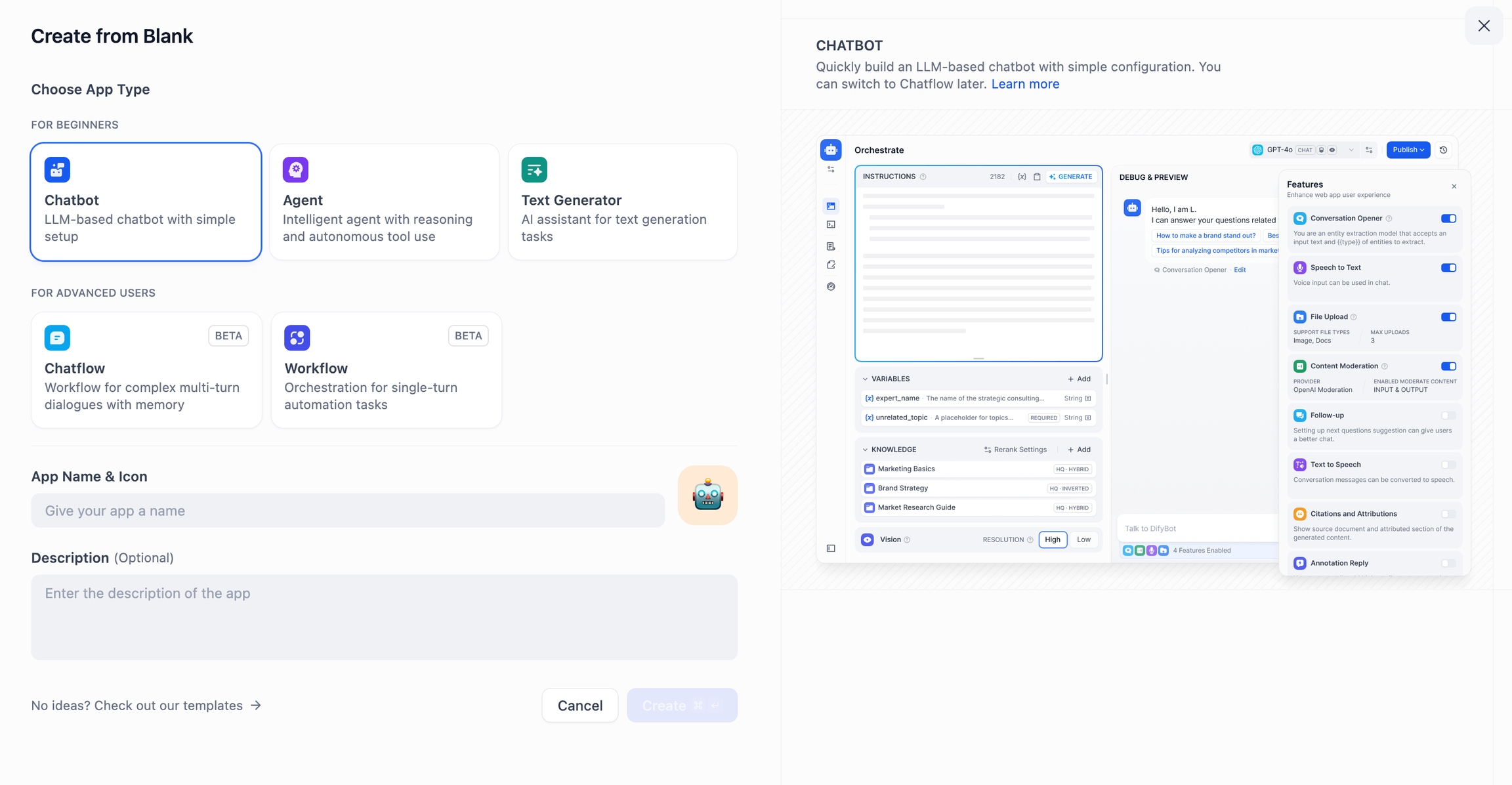Create Application
You can create applications in Dify's studio in three ways:
Create based on an application template (recommended for beginners)
Create a blank application
Create application via DSL file (Local/Online)
Creating an Application from a Template
When using Dify for the first time, you might be unfamiliar with creating applications. To help new users quickly understand what types of applications can be built on Dify, the prompt engineers from the Dify team have already created high-quality application templates for multiple scenarios.
You can select "Studio" from the navigation menu, then choose "Create from Template" in the application list.

Select any template and click Use this template.

Creating a New Application
If you need to create a blank application on Dify, you can select "Studio" from the navigation and then choose "Create from Blank" in the application list.

When creating an application for the first time, you might need to first understand the basic concepts of the five different types of applications on Dify: Chatbot, Text Generator, Agent, Chatflow and Workflow.
When selecting a specific application type, you can customize it by providing a name, choosing an appropriate icon(or uploading your favorite image as an icon), and writing a clear and concise description of its purpose. These details will help team members easily understand and use the application in the future.

Creating from a DSL File
Import local DSL file
If you have obtained a template (DSL file) from the community or others, you can choose "Import DSL File" from the studio. After importing, all configuration information of the original application will be loaded directly.

Import DSL file from URL
You can also import DSL files via a URL, using the following link format:

When importing a DSL file, the version will be checked. Significant discrepancies between DSL versions may lead to compatibility issues. For more details, please refer to Application Management: Import.
Last updated